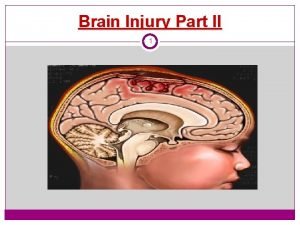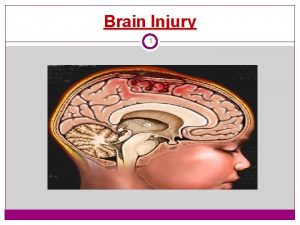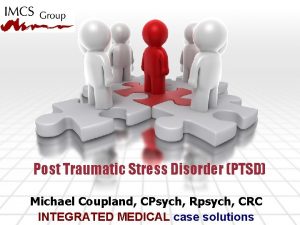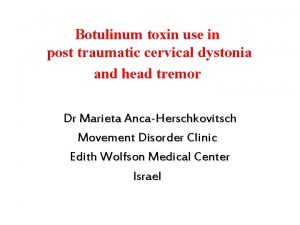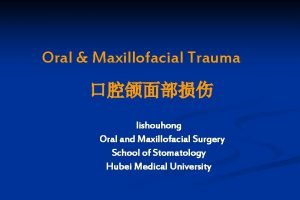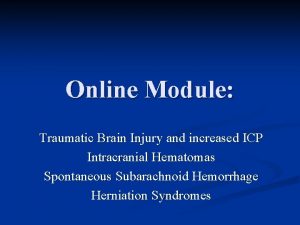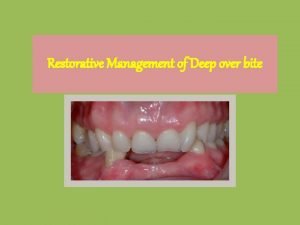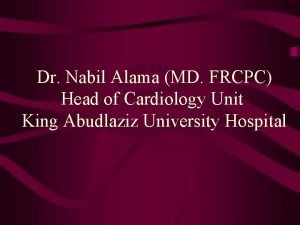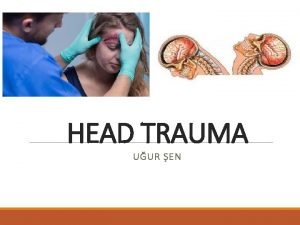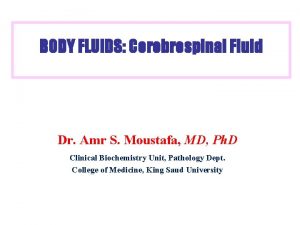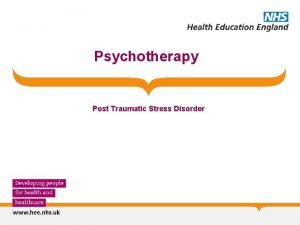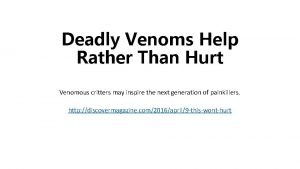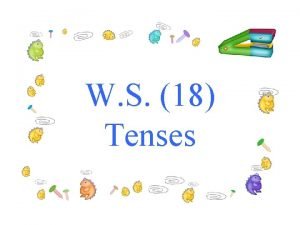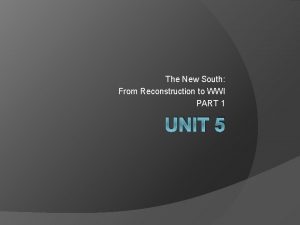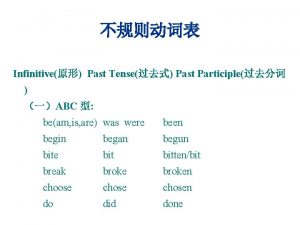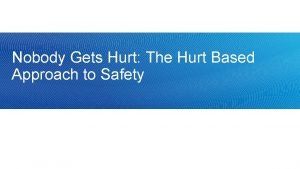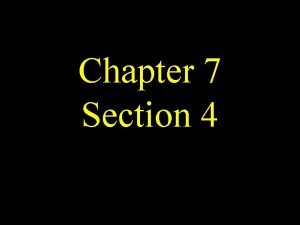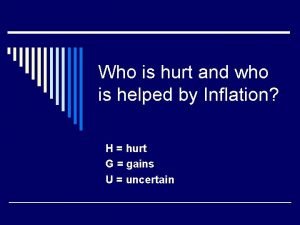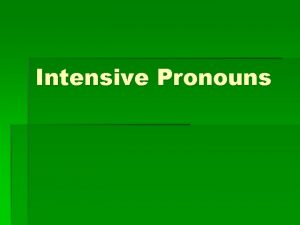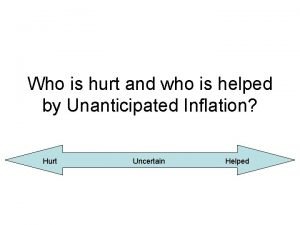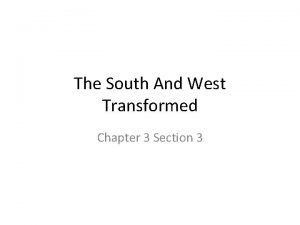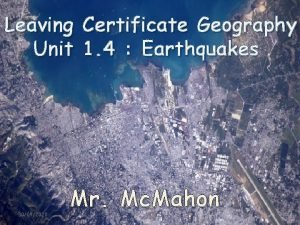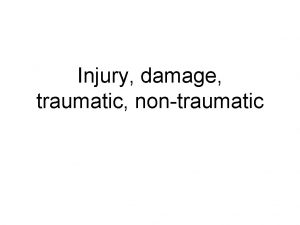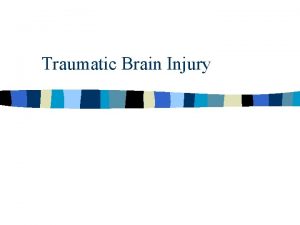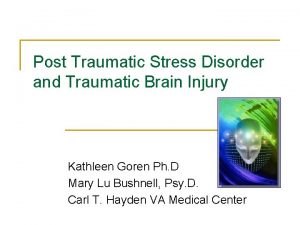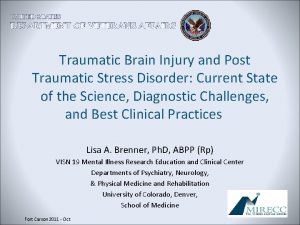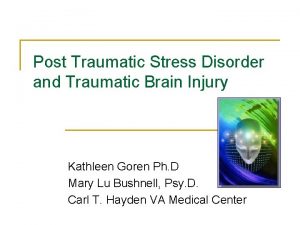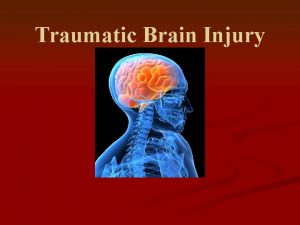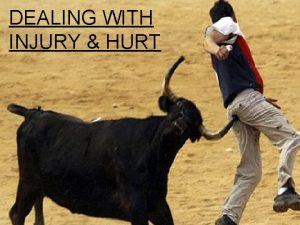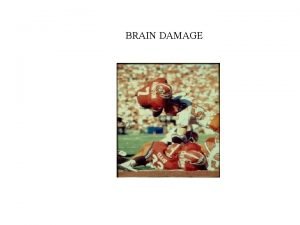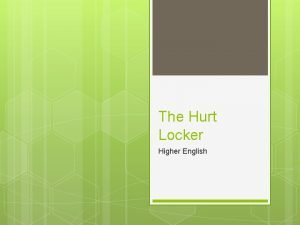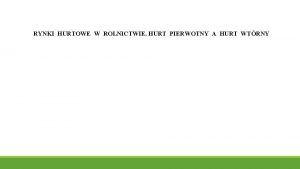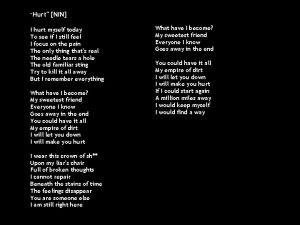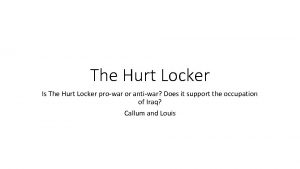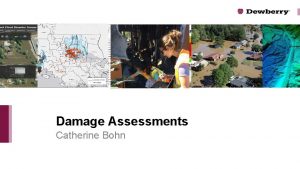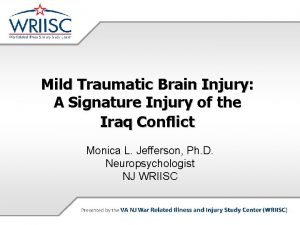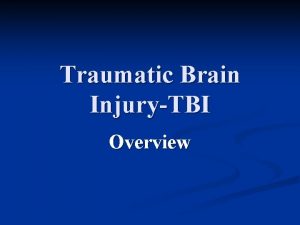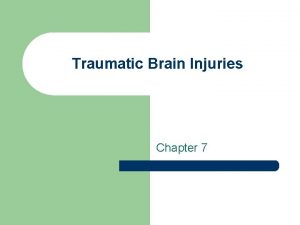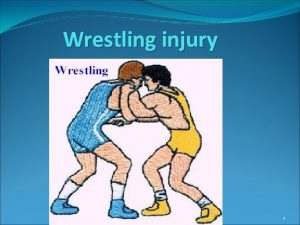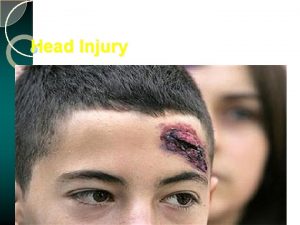Injury damage traumatic nontraumatic Injury Hurt damage or

































- Slides: 33

Injury, damage, traumatic, non-traumatic

Injury Hurt, damage, or loss sustained (Merriam-Webster) Physical harm or damage done to a living thing (Cambridge dictionary) Physical damage done to a person or a part of their body (Macmillan dictionary) Harm or hurt. To harm, hurt, or wound. The word injure may be in physical or emotional sense. From the Latin injuria meaning injury (Medicine. Net) Injury, also known as physical trauma, is damage to the body caused by external force Wikipedia). An injury or illness is an abnormal condition or disorder. Injuries include cases such as, but not limited to, a cut, fracture, sprain, or amputation. Illnesses include both acute and chronic illnesses, such as, but not limited to, a skin disease, respiratory disorder, or poisoning. (OSHA)

Injury – additional definitions 1

Injury – additional definitions 2

Injury – ICD-11 Definition • In the ICD, injury means physical or physiological bodily harm resulting from interaction of the body with energy (mechanical, thermal, electrical, chemical or radiant, or due to extreme pressure) in an amount, or at a rate of transfer, that exceeds physical or physiological tolerance.

Injury – ICD-11 continued • Injury can also result from lack of vital elements, such as oxygen. • Poisoning by and toxic effects of substances are included, as is damage of or due to implanted devices. • Maltreatment syndromes are included even if physical or physiological bodily harm has not been reported. • Injury usually has rapid onset in response to a well-defined event (e. g. a car crash, striking the ground after falling, drinking a strongly alkaline liquid, an overdose of a medication, a burn sustained during a surgical procedure). • • These events are often referred to as external causes of injury. • The injurious energy can, however, originate from the injured person and/or from his or her immediate environment (e. g. a person running on a hot day sustains heat exhaustion), and injury can be caused by the injured person (i. e. intentional self-harm). Injury includes manifestations that are evident immediately after onset, which may persist or not, and manifestations that first become evident at a later date.

Traumatic injury • Traumatic injuries are defined with an associated morphology of 19130008 |Traumatic abnormality (morphologic abnormality)| • It is questionable whether trauma is a kind of morphologic abnormality rather than a pathological process • Proposal is to model traumatic injuries using pathological process 263904004 |Traumatic (qualifier value)| • A non-traumatic pathological process would be difficult to define

Non-traumatic injury • A search for non-traumatic injury on the internet yields 63, 400, 000 hits • Most references to non-traumatic injury are related to nontraumatic brain injury (50, 500, 000) • There is no concept for non-traumatic brain injury in SNOMED CT only for 127294003 |Traumatic AND/OR non -traumatic brain injury (disorder)| • Non-traumatic brain injuries are defined by their causes

Brain injuries* • An insult to the brain that affects its structure or function, resulting in impairments of cognition, communication, physical function, or psychosocial behavior. • Acquired brain injury (ABI) includes both traumatic and nontraumatic brain injury. • Traumatic brain injuries may include open head injuries ( e. g. , gunshot wound, other penetrating injuries) or closed head injuries ( e. g. , blunt trauma, acceleration/deceleration injury, and blast injury). • Nontraumatic brain injuries may include those caused by strokes, nontraumatic hemorrhage, tumor, infectious diseases, hypoxic injuries, metabolic disorders, and toxic exposure. • ABI does not include brain injuries that are congenital, degenerative, or induced by birth trauma. " *Reference: Commission on Accreditation of Rehabilitation Facilities. Glossary. In: CARF Medical Rehabilitation Standards manual. Commission on Accreditation of Rehabilitation Facilities; 2012: 317.

Non-traumatic brain injury modeled as GCI


Cerebrovascular accident

Alternative model – traumatic injury

Traumatic injury

419945001 |Traumatic injury due to event (disorder)| - 1 • 37 children, 815 descendants

419945001 |Traumatic injury due to event (disorder)| - 2

Results of inactivation of 419945001 |Traumatic injury due to event (disorder)|

Injury due to exposure due to external cause (disorder)

Injury caused by causative force - 1

Injury caused by causative force - 2

Traumatic injury hierarchy after retiring 400209005 |Injury caused by causative force (disorder)|

Wound disorder

Birth trauma (of fetus)

Notes from 3/19 EAG call

Non-traumatic injury – alternate model

Cerbrovascular accident

Pathological fracture

Non-traumatic bone fracture

Remodel Fracture (morphologic abnormality)

Proposed model for fractures - 1

Proposed model for fractures - 2

Other non-traumatic injuries

Other non-traumatic injuries - remodeled
 Subdural hematoma concept map
Subdural hematoma concept map Traumatic brain injury concept map
Traumatic brain injury concept map Intentional and unintentional injury
Intentional and unintentional injury Post traumatic stress disorder
Post traumatic stress disorder Diagnosis of post traumatic stress disorder
Diagnosis of post traumatic stress disorder Post-traumatic cervical dystonia
Post-traumatic cervical dystonia Hyponuria
Hyponuria Subfalcine herniation
Subfalcine herniation Traumatic overbite
Traumatic overbite Tbi long term servival after traumatic
Tbi long term servival after traumatic Battle's sign
Battle's sign Csf traumatic tap
Csf traumatic tap C ptsd
C ptsd Damselfly
Damselfly Interestspy
Interestspy Deadly venoms help rather than hurt
Deadly venoms help rather than hurt Simple present verbs
Simple present verbs Lugenia burns hope
Lugenia burns hope “has technology helped or hurt society”.
“has technology helped or hurt society”. Infinitive past past participle
Infinitive past past participle Hurt level
Hurt level Mercedes streeter
Mercedes streeter How does predatory pricing hurt competition
How does predatory pricing hurt competition The hurt locker google drive
The hurt locker google drive Love ever hurt never
Love ever hurt never Verb of identical
Verb of identical Kathryn bigelow legs
Kathryn bigelow legs Who hurt
Who hurt What is an intensive pronoun
What is an intensive pronoun Who is hurt and who is helped by unanticipated inflation
Who is hurt and who is helped by unanticipated inflation Wear 3 alakja
Wear 3 alakja What three circumstances hurt native americans
What three circumstances hurt native americans What you dont know wont hurt
What you dont know wont hurt Earthquake levels chart
Earthquake levels chart
